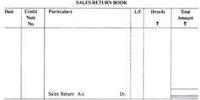Accounting equation is framework that states that the economic resources of a specific entity are equal to the claims on those resources.
Format: A = L + OE
Where, A = Asset
L = Liabilities
OE = Owner’s Equity
Parts of Accounting Equation: An accounting equation has the following three parts:
- Assets: Assets are the resources owned by a business. They are used in carrying out such activities as production, consumption, and exchange. The common characteristic possessed by all assets is the capacity to provide future services or benefits.
Examples: Land, building, equipment, cash are assets.
- Liabilities: Liabilities are the claims against assets. That is, liabilities are existing debts and obligations. These obligations are called accounts payable. Most claims of creditors attach to the entity’s total assets rather than to the specific assets provided by the creditor.
Examples: Accounts payable, mortgage payable, loan are liabilities.
- Owner’s Equity: Owner’s equity is the ownership claim on total assets. It is equal to total assets minus total liabilities. Usually, it includes total investments by the owner, and the net revenues generated by the business.
Examples: Capital, net revenue, reserve fund are owner’s equity.
Necessities of Accounting Equation: Accounting equation is the essential building block of accounting for financial balancing. It ensures the relationship between the assets and equities. We know from it that assets must equal the sum of liabilities and owner’s equity.
The accounting equation applies to all economic entities regardless of size, nature of business, or form of business organization. It applies to a small proprietorship such as a corner grocery as well as to a giant corporation such as Toyota Motors Ltd. The equation provides the underlying framework for recording and summarizing the economic events of a business enterprise.
To gist up, accounting equation is the underlying framework for recording and summarizing economic events.













